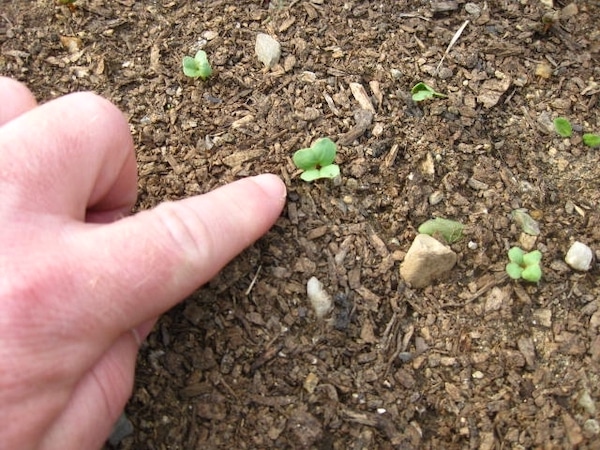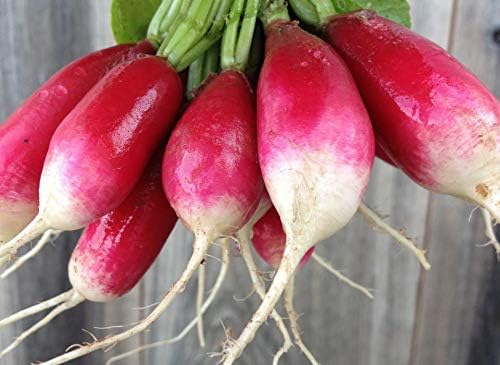Updated: November 20, 2020
What are five easy to grow fruits and vegetables? The answer: mixed leaf lettuce, arugula, blueberries, radishes and bush beans.
These good tasting, easy to grow fruits and vegetables are high on my list of things to grow when you are looking for a low stress garden that doesn’t require a lot of effort.
Let’s take a sec to get the legal words out of the way. This article may contain affiliate links. That means if you click and buy from my partners, I will make a tiny amount of money at no cost to you. This in no way affects my recommendations.

Top five easy to grow fruits and vegetables
1. Mixed Leaf Lettuce. As long as you grow mixed leaf lettuce when the temperature stays between 60 and 75 degrees Fahrenheit, it’s an easy vegetable to grow.
The two main problems with mixed leaf lettuce are slugs or rabbits. So if you don’t have either of these, you are good to go.
Just remember to plant lettuce early in the spring or early in the fall when temperatures aren’t too warm. Of course, you don’t want to plant before the danger of a hard frost is past because that will kill young lettuce.
Related: How to Grow Lettuce in the Fall
2. Arugula. If you read Suburban Hobby Farmer regularly, you know that I like arugula in my salad. What I haven’t mentioned is just how easy it is to grow.
Just put some seed down and water and watch it sprout. The only problem I’ve ever had is that too many of my seeds sprouted. The result: too many plants grow packed closely together. When this happens, some of the plants die unless you have super fertile soil.
The little known secret about blueberries is some varieties taste much better than others. I like Sweetcrisp blueberries.
— Suburban Hobby Farmer
My suggestion is sow arugula thinly. If you don’t mind salad greens with a bit of strong taste, you’ll really enjoy it.
Related: Everything You Need to Know About Vegetable Plant Spacing
3. Blueberries. To some people, this may be a surprising addition to the list. But if you live in an area were the soil pH is naturally acidic (between 4.5 and 5.5), blueberries are pretty easy to grow.
Most varieties need to have a reasonably cold winter and moist soil. If you buy blueberry bushes at your local nursery, you’ll want to find a variety that is good tasting. The little known secret about blueberries is some varieties taste much better than others.
I like Sweetcrisp blueberries.
If you have ever planted a shrub then you know how to plant blueberry bushes. It’s the same idea. But you need to be sure that you plant two different varieties. This is needed because you get more berries if the blossoms are cross pollinated.
After planting the bushes, all you have to do is prune dead and crossing branches in the late winter and water if it’s dry. That’s all you really need to do except pick the berries when they are ripe.
Related: How to Grow Blueberries

4. Radishes. For those of you that move at Internet speed and require instant gratification, try planting radishes. If you grow radishes in reasonably fertile soil, you may have plants in as soon as four to five days after sowing.
Plus, you could be eating radishes in as little as three weeks. My favorite variety is French Breakfast radishes.
5. Bush Beans. Back in Maine where I grew up, bush bean pests were few and the soil was ideal for growing this prolific crop.
Here in New Hampshire, I have had groundhogs mow plants to the ground. But if bush bean plants make it to maturity and conditions are right, it’s possible they will give and give and give until you say uncle.
Related: How to Save Green Bean Seeds
So this is my list of easy fruits and vegetables. There are others, but these are pretty, darn easy.
Related articles you might enjoy:
- How to Fertilize Plants with Aquarium Fish Water
- Winter Sowing Made Better
- What’s the Right Soil Temperature to Transplant Seedlings
Suburban Hobby Farmer is a participant in the Amazon Services LLC Associates Program, an affiliate advertising program designed to provide a means for sites to earn advertising fees by advertising and linking to amazon.com.